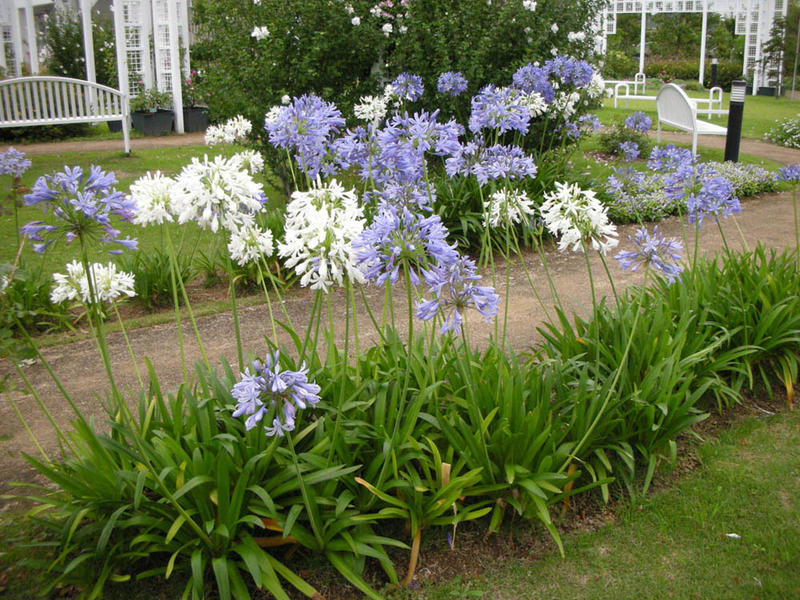Growing Agapanthus: A Total Overview to Beautiful Blooms
Growing Agapanthus: A Total Overview to Beautiful Blooms
Blog Article
Mastering the Art of Agapanthus Treatment: Vital Actions for Healthy Growth and Vivid Flowers
In the world of horticulture, the growing of agapanthus stands as a fulfilling undertaking for those that seek to support these elegant blooming plants. From selecting the ideal range to mastering pruning strategies, the journey towards cultivating prospering agapanthus plants is multifaceted and holds the key to opening the full possibility of these agricultural treasures.

Choosing the Right Agapanthus Range

When picking the appropriate Agapanthus variety for your garden, take into consideration factors such as environment viability, flower shade, and growth behavior. Agapanthus, generally recognized as Lily of the Nile or African lily, can be found in a variety of shades varying from shades of purple and blue to white. Choose a bloom color that complements your existing yard palette to produce a harmonious landscape. Additionally, think about the climate in your area to guarantee the Agapanthus selection you pick can flourish in your certain conditions. Some selections are much more forgiving of cold temperature levels, while others prefer warmer environments. Recognizing the growth habit of different Agapanthus ranges is crucial for proper placement within your yard. Some ranges have a clumping growth behavior, perfect for containers or borders, while others have an even more dispersing nature, appropriate for ground cover or mass plantings. By very carefully examining these aspects, you can pick the perfect Agapanthus range to boost the charm of your garden.
Perfect Planting Conditions
Considering the ideal ecological demands is necessary for successful Agapanthus growing. Agapanthus plants are sensitive to cool temperatures and ought to be secured from frost throughout winter season months.
To guarantee healthy development and vivid flowers, plant Agapanthus light bulbs at a depth of about 2-4 inches and area them 8-12 inches apart. Adding raw material, such as compost, to the soil can enhance drainage and fertility, promoting durable origin advancement. Mulching around the base of the plants assists preserve dampness and reduces weed development. Normal watering is essential, particularly during the growing season, to maintain the dirt consistently damp but not soaked.
Watering and Feeding Tips
Maintaining correct moisture levels and providing vital nutrients are essential aspects in the treatment routine for Agapanthus plants. It is crucial to strike an equilibrium when it comes to watering Agapanthus. These plants like regularly wet dirt however are at risk to root rot if overwatered. During the growing season, water deeply when a week, guaranteeing the soil is well-draining to avoid waterlogging. In hotter climates or during periods of dry spell, even more constant watering might be required to keep the soil equally moist. Nevertheless, decrease watering in the winter months to stop water logged conditions.
Fertilizing Agapanthus is crucial for advertising healthy and balanced development and prolific blooms. Use a well balanced plant food, such as a 10-10-10 formula, in the early springtime as brand-new development arises. Repeat this application every 6-8 weeks throughout the growing period. Prevent excessive fertilizing, as it can cause rich vegetation at the expense of flowers. Always follow the manufacturer's instructions for proper dilution and application methods. By following these watering and fertilizing ideas, you can guarantee your Agapanthus plants prosper and generate vivid, lasting blooms.
Pruning Strategies for Agapanthus
Trimming Agapanthus plants at the suitable times and with appropriate strategies is essential for keeping their health and wellness and advertising optimal development and flowering. The perfect time official site to trim Agapanthus remains in late winter months or early spring before brand-new development arises. Start by removing any kind of yellowing or dead leaves near the base of the plant. Cut them as short as feasible without harming the emerging shoots.
For flowered stems, wait until the blossoms have actually perished and afterwards trim them back to the base. This not only cleans the plant's appearance yet also encourages the growth of new blossom buds. Deadheading invested blossoms can likewise redirect the plant's energy into producing even more blossoms instead than establishing seeds. However, if you wish to gather seeds for proliferation, leave some flowers to dry and mature on the plant.
Remember to use clean, sharp tools to make precise cuts and decrease the risk of presenting illness. Agapanthus. Routine trimming will assist keep your Agapanthus looking neat and healthy and balanced while guaranteeing an abundant screen of lovely flowers
Handling Common Pests and Illness
After content ensuring correct pruning strategies for Agapanthus, it is crucial to deal with common insects and conditions that can influence the health and vitality of these plants. One usual pest that impacts Agapanthus is the Agapanthus gall midge.
Additionally, Agapanthus plants can suffer from root rot if they are planted in poorly draining soil. By being attentive and taking prompt activity versus insects and diseases, you can assist your Agapanthus plants prosper and create vibrant blossoms. Agapanthus.

Conclusion
To conclude, grasping the art of agapanthus treatment entails picking the best range, offering suitable growing problems, proper watering and fertilizing, ideal pruning strategies, and addressing common pests and conditions. By find here complying with these important steps, you can make sure healthy growth and lively blooms for your agapanthus plants. Keep in mind to routinely check and preserve your plants to promote their general well-being and long life.
To ensure healthy and balanced growth and vibrant blossoms, plant Agapanthus bulbs at a deepness of regarding 2-4 inches and area them 8-12 inches apart. By adhering to these watering and feeding pointers, you can ensure your Agapanthus plants grow and produce dynamic, resilient flowers.
One usual insect that impacts Agapanthus is the Agapanthus gall midget. Furthermore, Agapanthus plants can experience from root rot if they are grown in badly draining pipes soil. By adhering to these essential actions, you can make sure healthy and balanced growth and vivid blooms for your agapanthus plants.
Report this page